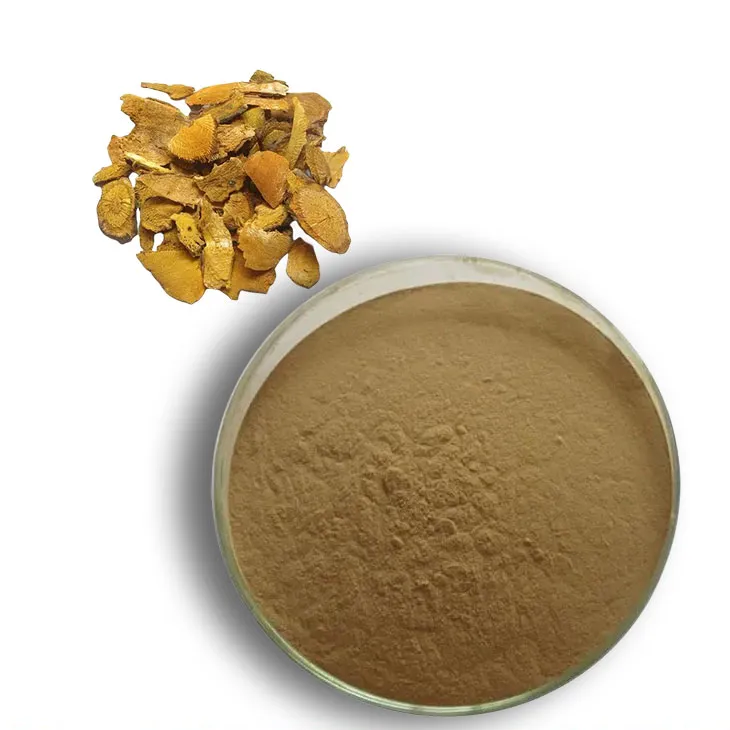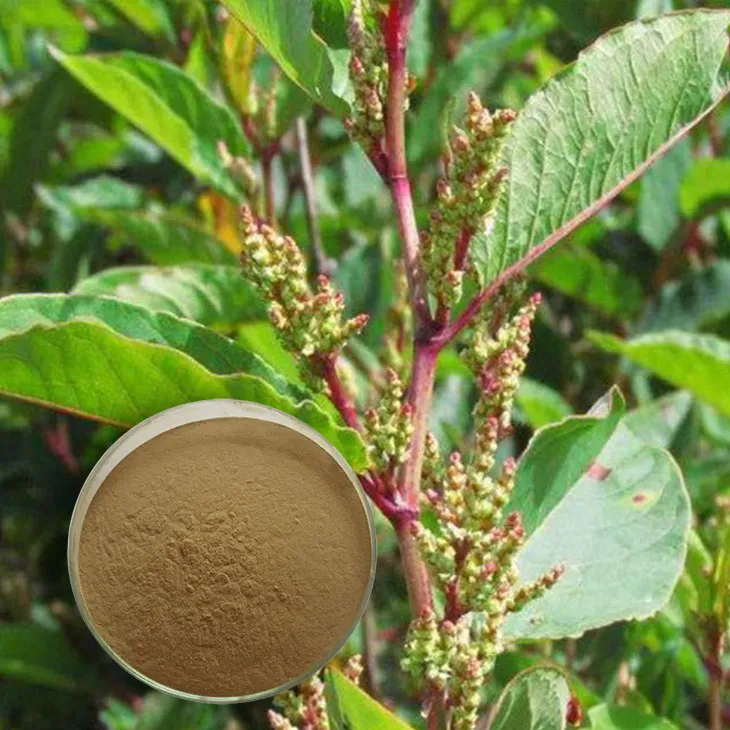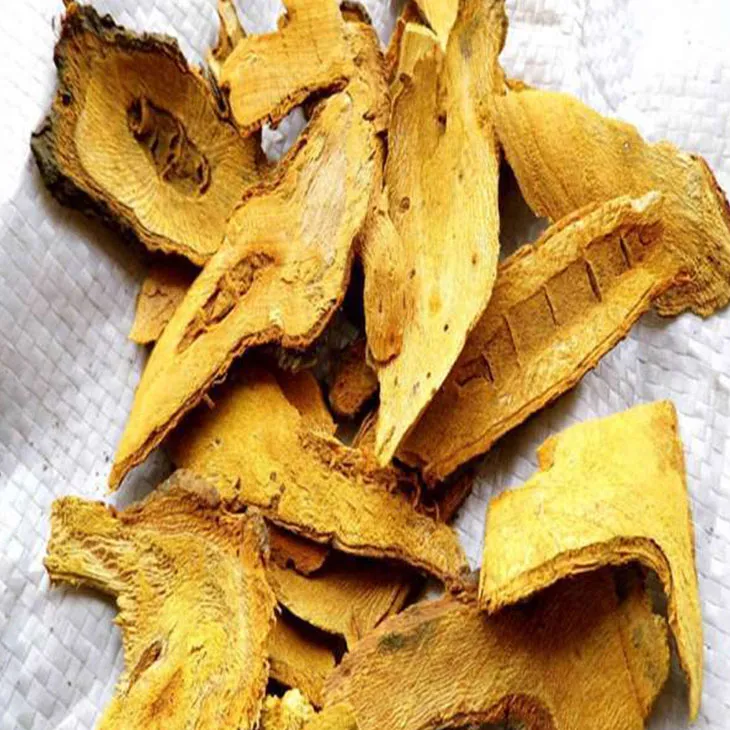- 0086-571-85302990
- sales@greenskybio.com
Manufacturers of Polygonum cuspidatum Extract.
2024-11-26

Introduction to Polygonum Cuspidatum Extract Manufacturers
Manufacturers of tiger - reed (Polygonum cuspidatum) extract are at the forefront of a burgeoning industry. The Polygonum cuspidatum plant, native to Asia, serves as the source of this valuable extract. These manufacturers play a crucial role in making the benefits of this plant extract accessible to various sectors.

Production Methods
Modern Extraction Techniques
When it comes to production, contemporary manufacturers employ state - of - the - art extraction methods. Two of the most common techniques are supercritical fluid extraction and solvent - based extraction.
Impact of Extraction Method on Extract Quality
The extraction method chosen has a significant impact on the quality and composition of the final extract. Manufacturers must strike a balance between maximizing the yield of bioactive compounds and maintaining their integrity. For instance, supercritical fluid extraction can be more selective in isolating specific bioactive components, but it may be more complex and costly compared to solvent - based extraction. Solvent - based extraction, on the other hand, may require additional purification steps to remove the solvent residues and ensure the safety and quality of the extract.

Meeting Market Requirements
Food and Beverage Industry
In the food and beverage industry, tiger - reed extract is sometimes used as a natural additive. Manufacturers in this sector must adhere to strict food safety regulations. They need to ensure that the extract is free from contaminants, has a consistent quality, and is labeled accurately. For example, if the extract is added to a functional beverage for its antioxidant properties, the manufacturer must prove that it does not introduce any harmful substances and that the claimed antioxidant benefits are supported by scientific evidence.
Nutraceutical Field
In the nutraceutical field, the extract is often promoted for its health - promoting properties. Manufacturers here have the responsibility of providing accurate scientific information. This includes details about the active compounds in the extract, their mechanisms of action in the body, and the appropriate dosage for different health benefits. For instance, if the extract is claimed to have anti - inflammatory effects, the manufacturer should be able to present research findings on how the bioactive compounds in the extract interact with the body's inflammatory pathways.

Challenges in International Trade
Manufacturers of Polygonum Cuspidatum Extract also face numerous challenges in international trade. Different countries have diverse regulations regarding the import and export of this extract.
- Some countries may require specific certifications for the extract, such as Good Manufacturing Practice (GMP) certificates or organic certifications if the plant is grown organically.
- There may be restrictions on the concentration of certain bioactive compounds in the extract, or on the use of specific solvents during the extraction process.
- Labeling requirements can also vary greatly. For example, in some countries, all ingredients in the extract must be listed in the local language, along with their scientific names and any potential allergens.
These differences require manufacturers to be well - informed and adaptable. They need to keep abreast of the regulatory changes in different markets and adjust their production and marketing strategies accordingly.
Innovation in the Industry
Innovation is a driving force for manufacturers of Polygonum Cuspidatum Extract.
Improving the Extraction Process
Manufacturers are constantly seeking ways to improve the extraction process. This may involve researching new solvents or extraction conditions that can enhance the efficiency and selectivity of the extraction. For example, some researchers are exploring the use of ionic liquids as alternative solvents for extracting bioactive compounds from Polygonum cuspidatum. These ionic liquids may offer advantages such as lower toxicity and better solubility for certain compounds compared to traditional solvents.
Developing New Product Formulations
Another aspect of innovation is developing new product formulations. Manufacturers are looking into creating different forms of the extract, such as capsules, tablets, or liquid concentrates, to meet the diverse needs of consumers. They are also exploring the combination of Polygonum cuspidatum extract with other complementary ingredients to enhance its effectiveness. For instance, combining the extract with vitamins or other herbal extracts to create a more comprehensive nutraceutical product.
Expanding Application Areas
Manufacturers are also focused on expanding the application areas of the extract. In addition to the food and beverage and nutraceutical industries, they are exploring potential applications in the cosmetics and pharmaceutical industries. In cosmetics, the extract's antioxidant and anti - inflammatory properties could be utilized in skin - care products for anti - aging or anti - acne effects. In the pharmaceutical industry, there is potential for the extract to be developed into drugs for treating certain diseases, although extensive research and clinical trials would be required.
Quality Control and Standardization
Ensuring quality control and standardization is essential for manufacturers of Polygonum cuspidatum extract.
Raw Material Sourcing
The quality of the extract starts with the sourcing of raw materials. Manufacturers need to ensure that the Polygonum cuspidatum plants are of high quality, grown in suitable environments, and free from pesticides and other contaminants. They may establish their own cultivation farms or work closely with reliable suppliers. For example, some manufacturers may choose to source plants from specific regions known for their clean environment and high - quality soil, which can contribute to the production of a superior extract.
Manufacturing Process Monitoring
During the manufacturing process, strict monitoring is required. This includes controlling the extraction parameters such as temperature, pressure, and extraction time in the case of supercritical fluid extraction or solvent - to - plant ratio in solvent - based extraction. Regular quality checks are also necessary to ensure that the extract meets the specified standards for bioactive compound content, purity, and safety. Any deviation from the standard process should be immediately identified and corrected to prevent the production of sub - standard products.
Final Product Testing
Before the extract is released to the market, comprehensive final product testing is carried out. This includes tests for identity, purity, potency, and stability. For example, spectroscopic techniques may be used to confirm the presence of specific bioactive compounds, while chromatographic methods can be employed to determine the purity and concentration of these compounds. Stability tests are also crucial to ensure that the extract maintains its quality over time under different storage conditions.
Conclusion
Manufacturers of Polygonum cuspidatum extract operate in a complex and dynamic environment. They face challenges in production, market requirements, international trade, and regulatory compliance. However, they also have opportunities for innovation and growth. By continuously improving their production processes, meeting market demands, and adhering to strict quality control and regulatory requirements, these manufacturers can contribute to the wider utilization of Polygonum cuspidatum extract in various industries and bring more health and other benefits to consumers.
FAQ:
What are the common extraction methods used by manufacturers of Polygonum cuspidatum extract?
Manufacturers often use techniques such as supercritical fluid extraction or solvent - based extraction. These methods play important roles in obtaining the extract, and the choice of method can significantly affect the quality and composition of the final extract.
How do manufacturers ensure the quality of Polygonum cuspidatum extract?
They need to balance between maximizing the yield of bioactive compounds and maintaining their integrity. Also, in different application areas like food and beverage or nutraceuticals, they must follow relevant regulations. For example, in the food industry, they need to comply with food safety regulations.
What challenges do manufacturers of Polygonum cuspidatum extract face in international trade?
Different countries may have different regulations regarding the import and export of the extract. Manufacturers need to be well - informed about these regulations and be adaptable to meet the requirements of different countries.
How do manufacturers meet diverse customer requirements?
For the food and beverage industry, they ensure the extract can be used as a safe natural additive. In the nutraceutical field, they provide accurate scientific information about the health - promoting properties of the extract.
Why is innovation important for manufacturers of Polygonum cuspidatum extract?
Innovation allows them to improve the extraction process, develop new product formulations, and expand the application areas of the extract, which helps them stay competitive in the market.
Related literature
- Polygonum Cuspidatum: A Review of Its Phytochemistry and Pharmacology"
- "The Production and Applications of Polygonum Cuspidatum Extract in the Modern Industry"
- "Advances in Extraction Techniques for Polygonum Cuspidatum - Derived Compounds"
- ▶ Hesperidin
- ▶ citrus bioflavonoids
- ▶ plant extract
- ▶ lycopene
- ▶ Diosmin
- ▶ Grape seed extract
- ▶ Sea buckthorn Juice Powder
- ▶ Beetroot powder
- ▶ Hops Extract
- ▶ Artichoke Extract
- ▶ Reishi mushroom extract
- ▶ Astaxanthin
- ▶ Green Tea Extract
- ▶ Curcumin Extract
- ▶ Horse Chestnut Extract
- ▶ Other Problems
- ▶ Boswellia Serrata Extract
- ▶ Resveratrol Extract
- ▶ Marigold Extract
- ▶ Grape Leaf Extract
- ▶ blog3
- ▶ blog4
-
Organic Tongkat Ali extract powder factory.
2024-11-26
-
How to make powder with ashwagandha extract.
2024-11-26
-
Rosehip extract manufacturers from China.
2024-11-26
-
The best cat's claw extract in nature.
2024-11-26
-
Chinese Dandelion Leaf Extract Suppliers.
2024-11-26
-
Shikonin
2024-11-26
-
Pine bark Extract Powder
2024-11-26
-
Nettle leaf extract
2024-11-26
-
Citrus Aurantium Extract
2024-11-26
-
Alfalfa Meal
2024-11-26
-
Mulberry leaf Extract
2024-11-26
-
Black Pepper Extract
2024-11-26
-
Acerola Juice Powder
2024-11-26
-
Mulberry Extract
2024-11-26
-
Astaxanthin
2024-11-26





















